Are you worried about how to put on eye makeup after your cataract surgery? Don’t worry, you’re not alone. Many people struggle with this issue as they heal and adjust to their new vision.
Cataract surgery is a common procedure that significantly improves vision and quality of life. However, it also necessitates certain post-operative precautions, particularly regarding eye makeup. Proper eye makeup application after cataract surgery is crucial to avoid irritation, infection, or other complications. As such, it’s important to follow your doctor’s instructions and take special care when applying eye makeup during the recovery period.
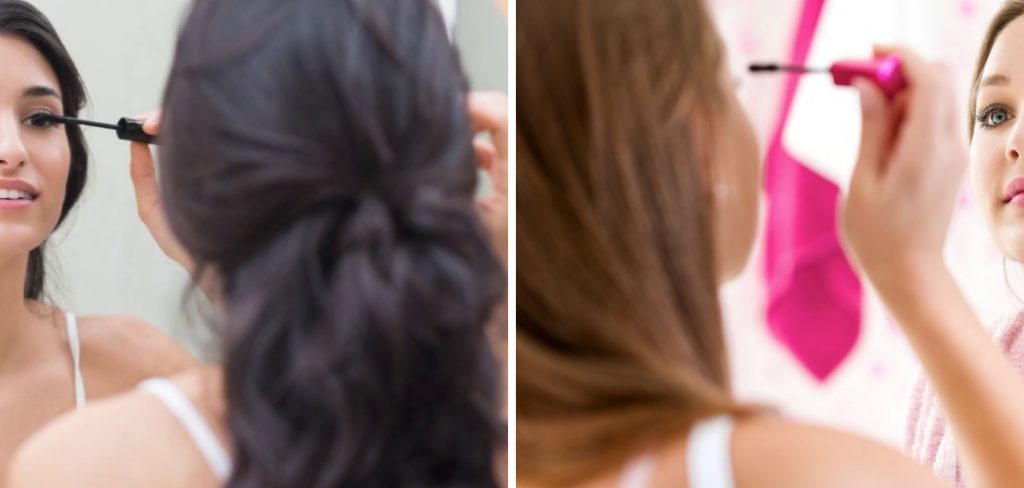
This guide aims to provide you with clear and comprehensive instructions on how to put on eye makeup after cataract surgery, ensuring that you can still enjoy your beauty routine while protecting your healing eyes.
What Will You Need?
Before you begin applying makeup, it’s essential to have all the necessary tools and products on hand. Here are some items you may need:
- Clean washcloth or towel
- Eye makeup remover (oil-free)
- Gentle facial cleanser
- Moisturizer suitable for sensitive skin
- Non-allergenic eye shadow, eyeliner, and mascara
- Soft makeup brushes or sponges
It’s crucial to choose non-allergenic eye makeup products that won’t irritate your eyes or interfere with healing. Look for labels that say “ophthalmologist-tested” or “safe for sensitive eyes.”
10 Easy Steps on How to Put on Eye Makeup After Cataract Surgery
Step 1: Wash Your Hands Thoroughly
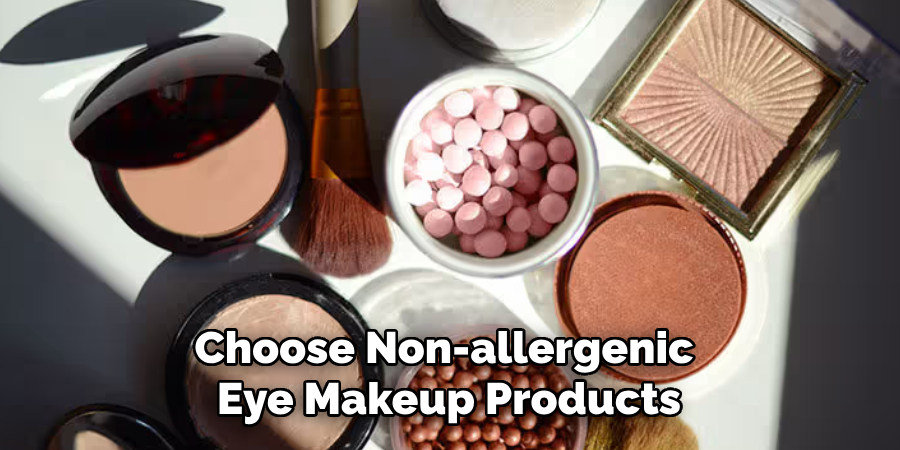
The first and most critical step before applying any makeup is to wash your hands thoroughly. This helps to minimize the risk of introducing bacteria or other contaminants to your eyes, which is especially important after cataract surgery when your eyes are more vulnerable to infections. Use warm water and soap, scrubbing both the front and back of your hands, between your fingers, and under your nails for at least 20 seconds. Dry your hands with a clean towel to avoid transferring any residual bacteria.
Step 2: Cleanse Your Face
Begin your makeup routine with a clean slate by gently cleansing your face. Use a gentle facial cleanser suited for sensitive skin to remove any dirt, oil, or leftover makeup from the night before. Avoid vigorous rubbing, especially around the eye area. Rinse your face with lukewarm water and pat it dry with a clean, soft towel. This step ensures that no residue will mix with your makeup, helping to prevent irritation and promote a healthy healing process.
Step 3: Apply Moisturizer
After cleansing, apply a light moisturizer suitable for sensitive skin. Make sure to choose a product that is fragrance-free and hypoallergenic to avoid any potential irritants. Gently pat the moisturizer around your face, being cautious around the eye area. Proper hydration keeps your skin healthy and smooth, creating a better base for makeup application.
Step 4: Use an Oil-Free Eye Makeup Remover
Before applying fresh makeup, ensure your eye area is completely free of any residual makeup. Use an oil-free eye makeup remover on a soft cotton pad to gently wipe your eyelids and lashes. This step helps to ensure that no old makeup particles will cause irritation or infection. Opting for oil-free removers is essential as oils can sometimes interfere with the healing process or leave a residue that could attract bacteria.
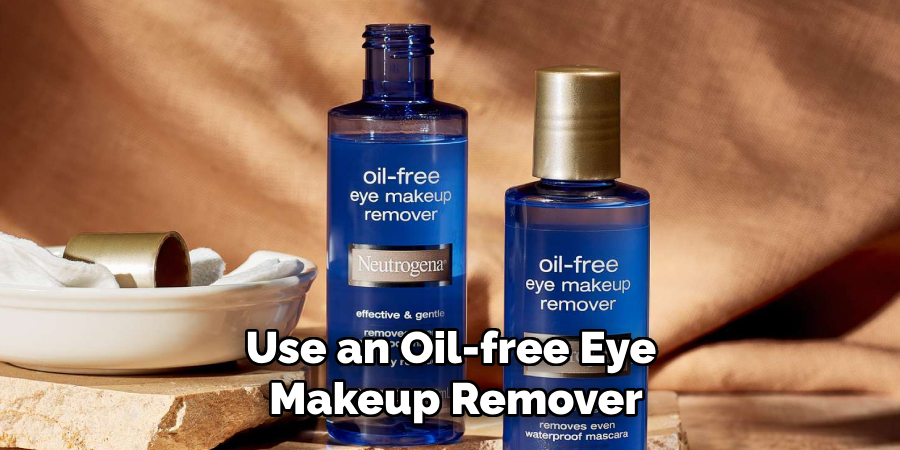
Step 5: Apply a Primer (Optional)
If you usually use a makeup primer, choose one that is suitable for sensitive skin and apply it carefully around the eyes. Primers can help makeup last longer and prevent it from creasing or smudging throughout the day. Use a small amount and blend it gently with your fingertips, being extremely careful not to apply any pressure on your eyelids or eyeballs.
Step 6: Apply Eye Shadow
Choose a non-allergenic eye shadow that is labeled as safe for sensitive eyes. Use a soft makeup brush to gently apply the eye shadow on your eyelids. Start with a light, neutral base shade and apply it across the entire lid. Then, if desired, add a slightly darker shade to the crease to create depth. Be gentle and avoid tugging on your eyelids. Tap off any excess powder from the brush before applying to reduce the risk of particles falling into your eyes.
Step 7: Apply Eyeliner
Select a non-allergenic eyeliner and carefully apply it along your upper lash line. If you prefer a more dramatic look, you can also line the lower lash line, but be extremely cautious. Use smooth, gentle strokes to avoid touching the delicate skin around your eyes. Consider using a pencil eyeliner, as it is easier to control than liquid or gel liners, which could smudge or irritate the eyes.
Step 8: Apply Mascara
Opt for a non-allergenic mascara that is specifically designed for sensitive eyes. Gently apply the mascara to your upper lashes using a zigzag motion to prevent clumping. Avoid applying mascara to your lower lashes during the initial healing period, as this can increase the chance of smudging and lead to irritation or infection. Make sure to replace your mascara every three months to remain bacteria-free.
Step 9: Avoid Touching Your Eyes
Once you’ve finished applying your eye makeup, try to avoid touching or rubbing your eyes throughout the day. Touching your eyes can transfer bacteria and cause irritation, which is especially risky after cataract surgery. If your eyes feel itchy or uncomfortable, use a sterile, pre-moistened eye wipe or gently dab with a clean tissue to address the issue.
Step 10: Remove Makeup Carefully
At the end of the day, removing your makeup thoroughly yet gently is crucial. Use an oil-free eye makeup remover and soft cotton pads to clean your eyelids and lashes. Follow up with your gentle facial cleanser to ensure all makeup is removed, avoiding vigorous rubbing or scrubbing. Properly removing your makeup helps to maintain eye hygiene and prevent potential infections and complications during your recovery period.
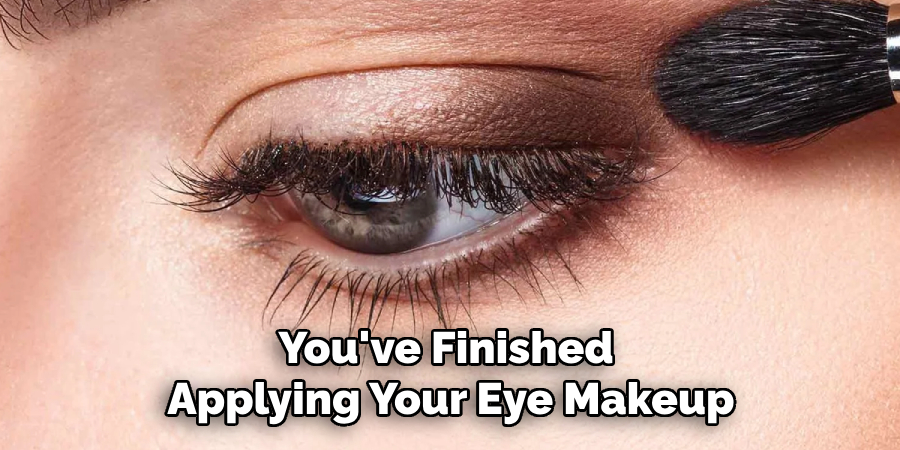
By following these ten simple steps, you can safely and effectively put on eye makeup after cataract surgery.
5 Additional Tips and Tricks
- Clean Hands and Brushes: Always ensure that your hands and makeup brushes are thoroughly cleaned before applying makeup. This helps to prevent any potential infection while your eyes are still healing.
- Use Hypoallergenic Products: Opt for hypoallergenic and fragrance-free makeup products to avoid any irritation. Your eyes will be more sensitive after surgery, and using gentle products can help mitigate any adverse reactions.
- Avoid the Waterline: Do not apply eyeliner or any other makeup product directly on the waterline. Keeping makeup away from the inner parts of your eyes helps reduce the risk of infection and irritation.
- Replace Old Makeup: If you haven’t replaced your eye makeup in a while, this is a good opportunity to do so. Old makeup can harbor bacteria, which can be harmful to healing eyes.
- Gentle Removal: Use a gentle, non-irritating remover when removing your eye makeup. Be careful not to rub your eyes harshly. Instead, use soft, gentle motions to clean your eyelids without causing trauma to the surgery site.
With these additional tips and tricks, you can ensure a smooth and successful recovery from your eyelid surgery.
5 Things You Should Avoid
- Applying Makeup Too Soon: It’s crucial to avoid using any eye makeup immediately after your cataract surgery. Your doctor will give you a timeframe, usually around 1-2 weeks, during which you should refrain from using cosmetics to allow your eyes proper healing time.
- Using Glittery or Shimmering Makeup: Refrain from using makeup products that contain glitter or shimmer particles. These tiny particles can easily get into your eyes and cause irritation or even scratches on the delicate surface of your eyes.
- Sharing Makeup Products: Never share your eye makeup products with others. Sharing can transfer bacteria and other pathogens, increasing your risk of infection while your eyes are healing.
- Skipping Regular Cleaning: Avoid neglecting the regular cleaning of your makeup brushes and applicators. Dirty tools can harbor bacteria that can lead to infections, especially when your eyes are vulnerable post-surgery.
- Waterproof Makeup: Avoid waterproof eye makeup during your recovery period. These products are harder to remove and require more vigorous rubbing, which can be harmful to your healing eyes. Instead, opt for easy-to-remove makeup that won’t require excessive contact with your eyes.
By avoiding these things, you can help ensure a smooth, safe, and successful recovery from your eyelid surgery.
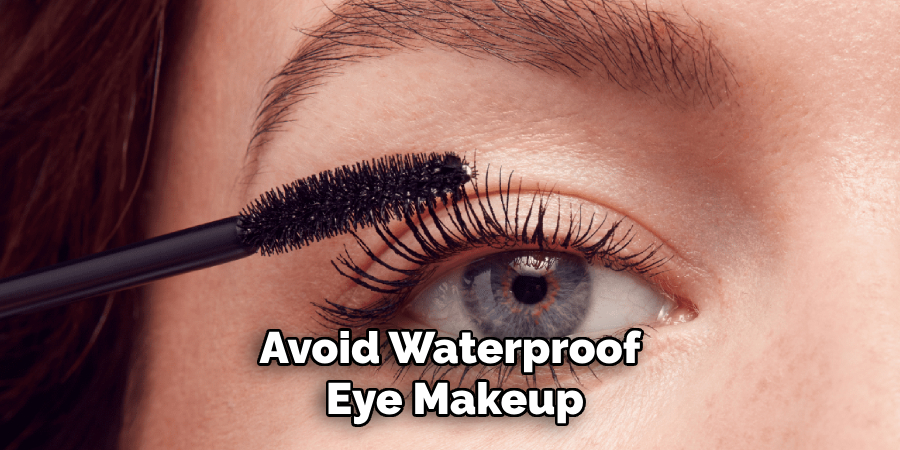
Conclusion
In conclusion, taking the right precautions when applying eye makeup after cataract surgery is essential for a smooth recovery.
Start by following your doctor’s advice on when it is safe to resume using eye makeup. Choose hypoallergenic, fragrance-free, and gentle products to minimize the risk of irritation or infection. Maintain diligent hygiene by keeping your hands and brushes clean, and avoid using old or shared makeup products. Steer clear of applying makeup on the waterline and refrain from using glittery or waterproof products that can be difficult to remove.
By adhering to these guidelines on how to put on eye makeup after cataract surgery, you can enjoy wearing makeup without compromising the healing process of your eyes. Your health and safety come first, and with proper care, you can achieve beautiful results while protecting your vision.
About the Author
Jane Hubbard is a passionate beauty expert with a wealth of experience in makeup, hair, and overall beauty techniques. After years of working as a hairdresser specialist, she followed her entrepreneurial spirit and started her own consultancy business.
Jane has always been driven by her desire to help others feel confident in their own skin, and she does this by sharing her knowledge, experiences, and practical beauty tips. Through her consultancy, she empowers individuals to embrace their unique beauty, offering tailored guidance that boosts both self-esteem and personal style.
Professional Focus
- Specializes in makeup, hairstyling, and beauty consulting.
- Provides personalized beauty advice, tips, and techniques to help individuals feel confident in their appearance.
- Dedicated to staying up-to-date with the latest industry trends and developments.
- Passionate about creating a comfortable and empowering experience for every client.
Education History
- University of Craft and Design – Bachelor of Fine Arts (BFA) in Woodworking and Furniture Design
- Woodworking Apprenticeships – Extensive hands-on training with skilled craftsmen to refine carpentry and furniture making techniques
- Online Courses & Masterclasses – Continued education in advanced woodworking techniques, design principles, and specialized tools
Expertise:
- Makeup artistry, hairstyling, and beauty consulting.
- Personalized beauty techniques to enhance confidence and self-expression.
- Educating clients on how to maintain their beauty routines at home.
